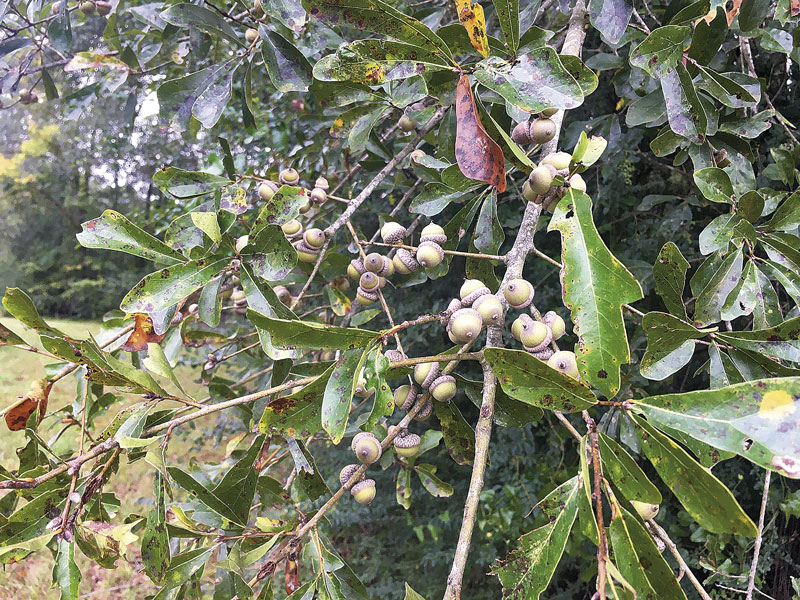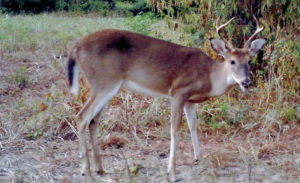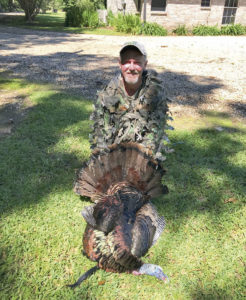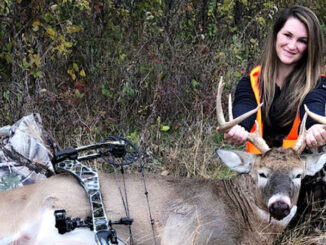
You can’t reap good results without productive work on your land
“For whatever a man sows, that he will also reap.” Galatians 6:7b
Scripture is very clear about the principles of sowing and reaping. Good will come to those who sow the love of God, while trouble and strife comes to those who sow evil and hatred.
This same principle applies to the laws of the deer harvest. The success or failure of a deer-management program is directly related to whatever work is or is not applied to the habitat and the herd. Sit around and do nothing, and the harvest will be lacking; develop a plan and work the plan, and the harvest will be good.
Develop a plan
Every successful deer program begins with a well-designed management plan. This may require assistance from biologists who are trained to do this work. It certainly will require a survey of the habitat and forest to evaluate the good, the bad and the ugly of the landscape. It will also require background information on herd conditions. Harvest data that biologists have from surrounding areas is very useful for providing insight regarding the growth potential of the herd.

Develop realistic goals and objectives and allow time for the plan to work. This will generally take a few years and may require periodic tweaking of the plan. Do not change the plan in midstream or jump around trying to find a silver bullet that one thinks will make success happen over night.
Maximum benefit
The key to a successful deer program is good nutrition. It is needed year-round, not just during the hunting season. It is required for body growth, antler development and reproduction. If it is lacking, animal quality and health will be mediocre at best.
If the plan calls for periodic timber harvests, harvest the timber. If year-round plantings are needed to supplement habitat, especially in spring or summer when protein demands are high, plant. If the habitat is poor and the ability to manage the landscape is low, bite the bullet and feed year-round if you can afford it. All of these activities should have been part of the plan and habitat needs already determined along with the capability of the manager to do the work needed.
Achieve harvest goals, especially does. The lack of either-sex harvest has always been a stumbling block for managers and programs. The mindset of most hunters is to pass on does because they produce the bucks. Too many deer on the habitat and landscape will reduce animal quality and spell doom for a program. Stay on top of the harvest, which can be impacted by bad weather and poor hunter effort. Don’t forget to harvest low-end bucks that never reach the desired potential.
Other species

A good deer-management program is always beneficial for other game species. Turkeys greatly benefit from the creation of openings and food plot work. Quail benefit from prescribed burning and logging. Rabbits always benefit from cover development and clover patches. Year-round plantings provide food for many species; even squirrels benefit from the wheat that is allowed to seed out in the fields along the edges of the woods. Everyone benefits from control of nuisance hogs, especially the landscape.
Down the road
It will take time for a management program to achieve the desired success. The oak trees planted this year will be food trees in 15 or 20 years. The desirable, young bucks passed up this season will be the quality adult bucks in two to three years. Age is a requirement for both quality and trophy deer management, and desirable yearling bucks must be passed up if this is the objective of the program. If you do not shoot the needed number of does to keep the herd in balance with the habitat, both the habitat and herd will suffer over time.
A fun harvest
Hunting is recreation, and it should be fun. If you’re not having fun with your management program, something is wrong. This is why establishing goals and objectives that can be achieved and fits your purpose is so important. If you established goals to produce 160-class adult bucks on habitat that will only grow a 120-class deer, tweak the program and keep going.
Don’t be discouraged or upset about a poor season. In the Gulf Coast environment we have in Louisiana, winters can be warm, and a warm fall and winter make for poor deer activity. Deer sightings may be down, but that does not necessarily equate to low deer numbers. Keep working during the offseason with your observations and camera work which provides good insight into actual numbers.
As we move ahead toward the end of 2020, keep in mind those who have suffered loss and share with them whenever you have opportunity. Remember, whatever you sow, that will you also reap.
The Hunters for the Hungry Program is one way to give back to those who have suffered loss. Have fun but be safe during the hunting season.


